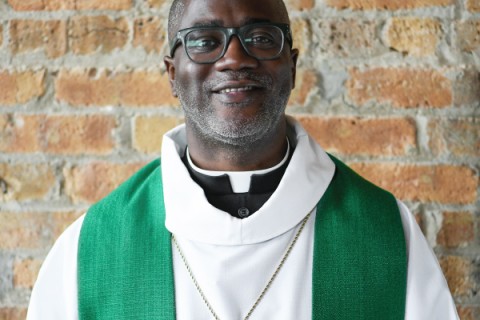Habits of hobbits: A good day to begin the world again
In these days of extraordinary terror and ordinary routine, the future seems at once darker and more open than we had expected. It may be that in the face of war or want, future generations will answer the call to Christian heroism with renewed vigor, and take refuge in Christian hope from failed utopias. It may be that such a change has already begun, though few observers mark it. It’s not impossible—for stranger things have happened—that a new religious renaissance will bring forth battalions of missionaries, teachers, ministers, artists, guardians and healers to step into the old order and salvage it in the name of Christ. A great deal depends on what we are willing to imagine.
For the present, however, what we are willing to imagine is circumscribed by society. Every institution with which we deal—our schools, hospitals, courts, theaters, newspapers, stores, playgrounds and even churches—tells us by signs overt or subliminal that the dramatic parts of the Christian story are over, except for some commotion at the end on which it’s best not to dwell. We know this can’t be quite right, and yet these blandishments, claiming to be the voice of reason, whisper in our ears so continuously that we begin to suffer imagination fatigue.
Imagination fatigue doesn’t directly attack the Christian faith; instead, it diminishes the power of the Christian story to quicken culture. “The heart is commonly reached,” as John Henry Newman wrote, “not through the reason, but through the imagination, by means of direct impressions, by the testimony of facts and events, by history, by description.” But if imagination is fatigued, faith is surely in jeopardy, and even testimony begins to falter.
Many Christians say they have found a remedy for this malady in the writings of mythographer-philologist J. R. R. Tolkien. Tolkien’s well-known dislike of allegory has not deterred Christian readers from repairing to The Lord of the Rings trilogy for intimations of the gospel. Nor should it deter us, for where The Lord of the Rings most resembles the gospel is in its nonallegorical emphasis on the choices of individuals and on singular historic events—marvelous, terrible and unrepeatable—by which the fate of the world is changed.
If Tolkien’s mythos holds a cure for Christian imagination fatigue, it will be found not by mining it for Christian similitudes but by allowing the legendary matter of Middle-earth to work its magic upon us as if it were true; for by investing his “secondary world” of elves, hobbits and orcs with literary truth, Tolkien reawakens our aptitude for believing in revealed truths about the primary world of angels and men.
This is the interpretation of Tolkien’s vision being offered by Christian writers Verlyn Flieger, Joseph Pearce, Bradley Birzer and others. To the literary critics who are appalled by the extent of Tolkien’s popularity, it will be one more thing to hold against him, but a feast of Christian Tolkien writing is just around the corner. Ralph Wood’s The Gospel According to J.R.R. Tolkien will be released by Westminster John Knox in October, and Stratford Caldecott’s Secret Fire: The Spiritual Vision of J.R.R. Tolkien is scheduled to be published by Darton, Longman & Todd in November. In the meantime, there is much to savor in A Hidden Presence: The Catholic Imagination of J.R.R. Tolkien, a collection of essays edited by Caldecott and Ian Boyd just published by the Chesterton Press and distributed by ISI Books. Among other illuminating essays in A Hidden Presence, Caldecott’s “The Horns of Hope” expounds the Christian heroism of Tolkien’s saga without reducing it to a schoolboy’s hornbook of Christian virtues, and discovers poignant intimations of Mary in such figures as Elbereth, Galadriel, Lúthien and Arwen, whose qualities of “beauty both in majesty and simplicity” Tolkien says he learned from his childhood and lifelong veneration of the Blessed Virgin.
An anointed king who returns to bring healing, traveling through the land of the dead and releasing its captives; the checking of evil by refusal of assent; the overturning of the mighty by the small; loyalty, chivalry, honor, sacrifice, friendship, the warmth of hearth and home, the goodness of created things (including pipeweed), the dignity of labor and service, the mystery of free will, the Eucatastrophe (Tolkien’s term) by which death and darkness are suddenly overturned—all these are the stuff of Tolkien’s myth, and strong in healing virtue for reviving a dormant Christian imagination.
To assent to Tolkien’s secondary world is good training for Christians who seek to echo Mary’s yes to the redemption of the primary world. A path leads from Middle-earth to the rediscovery of the complete Christian romance. Having loved Tolkien’s stories, we are better prepared to read the world’s epics, from the Norse sagas to the Odyssey to the Mahabharata, as shadows and figures of truth, to read Christian epics like The Divine Comedy as shining mirrors of truth, and to read the epic of all epics, the Bible, as primary truth. It’s no trifle, as both Caldecott and Tolkien scholar Tom Shippey have observed, that the day of Mary’s fiat, the 25th of March, corresponds in the reckoning of the Shire to the day the Ring of Power was destroyed and the reign of Sauron ended—a good day to begin the world again.




